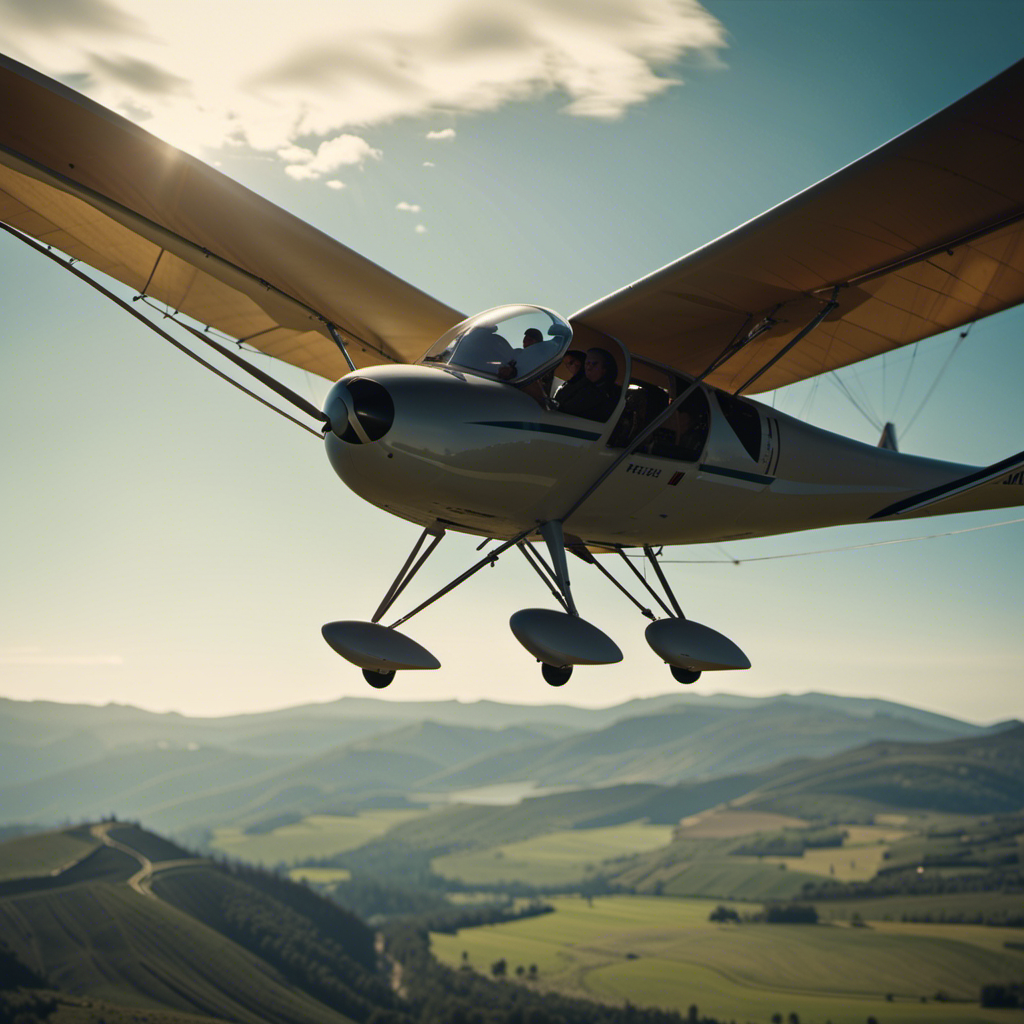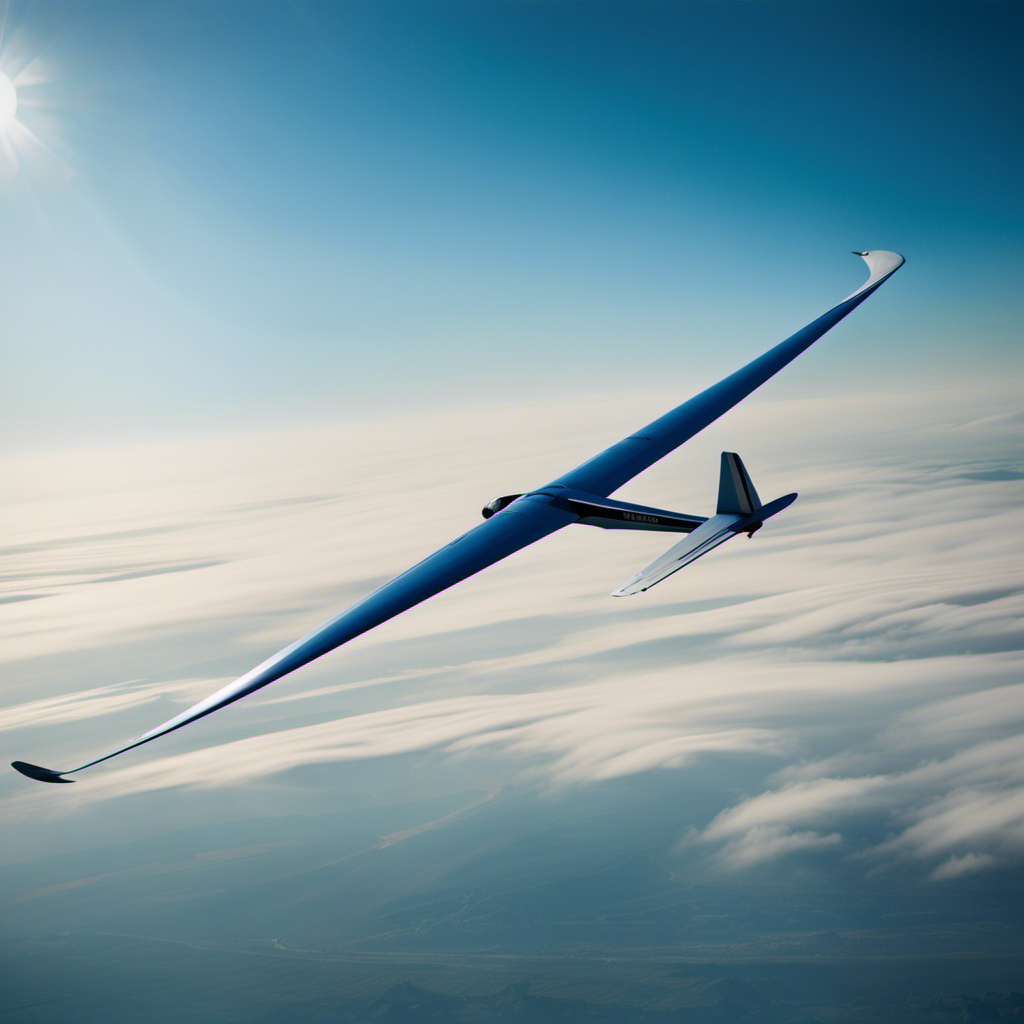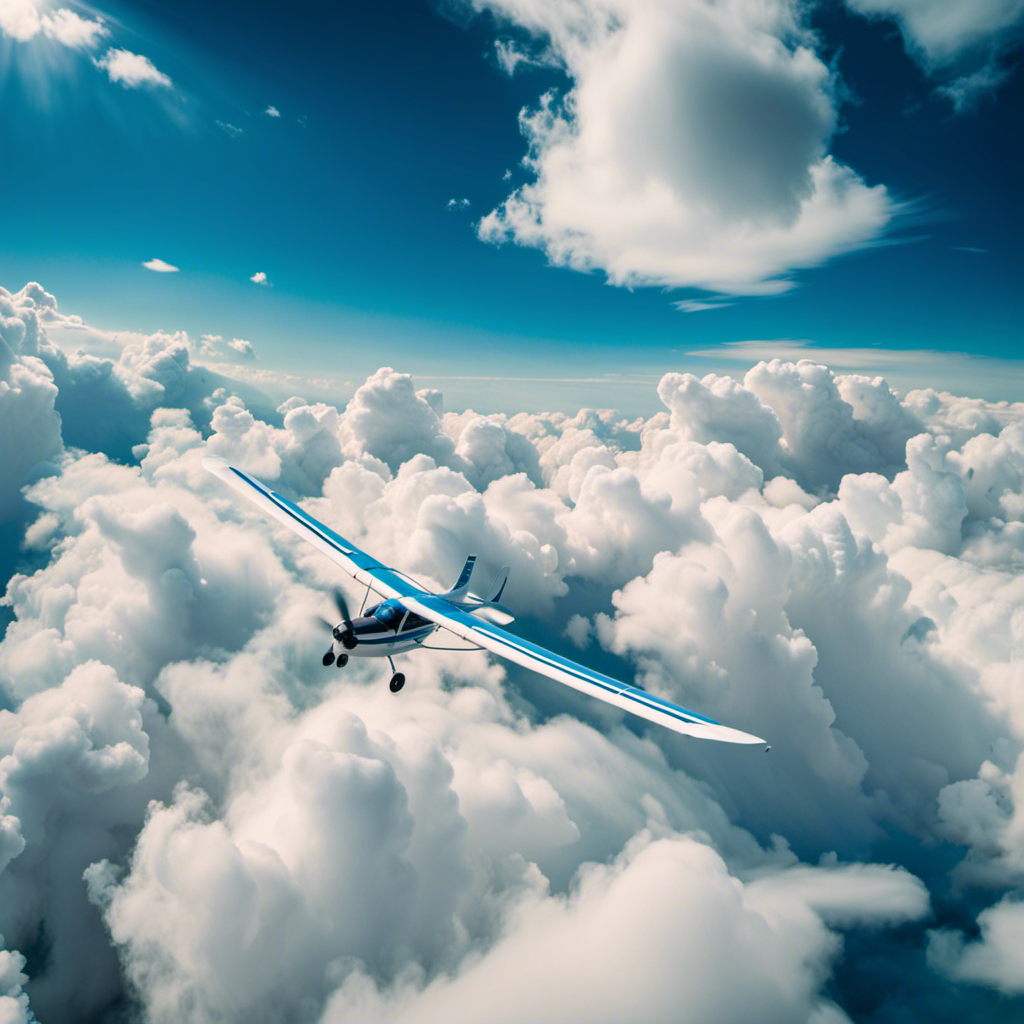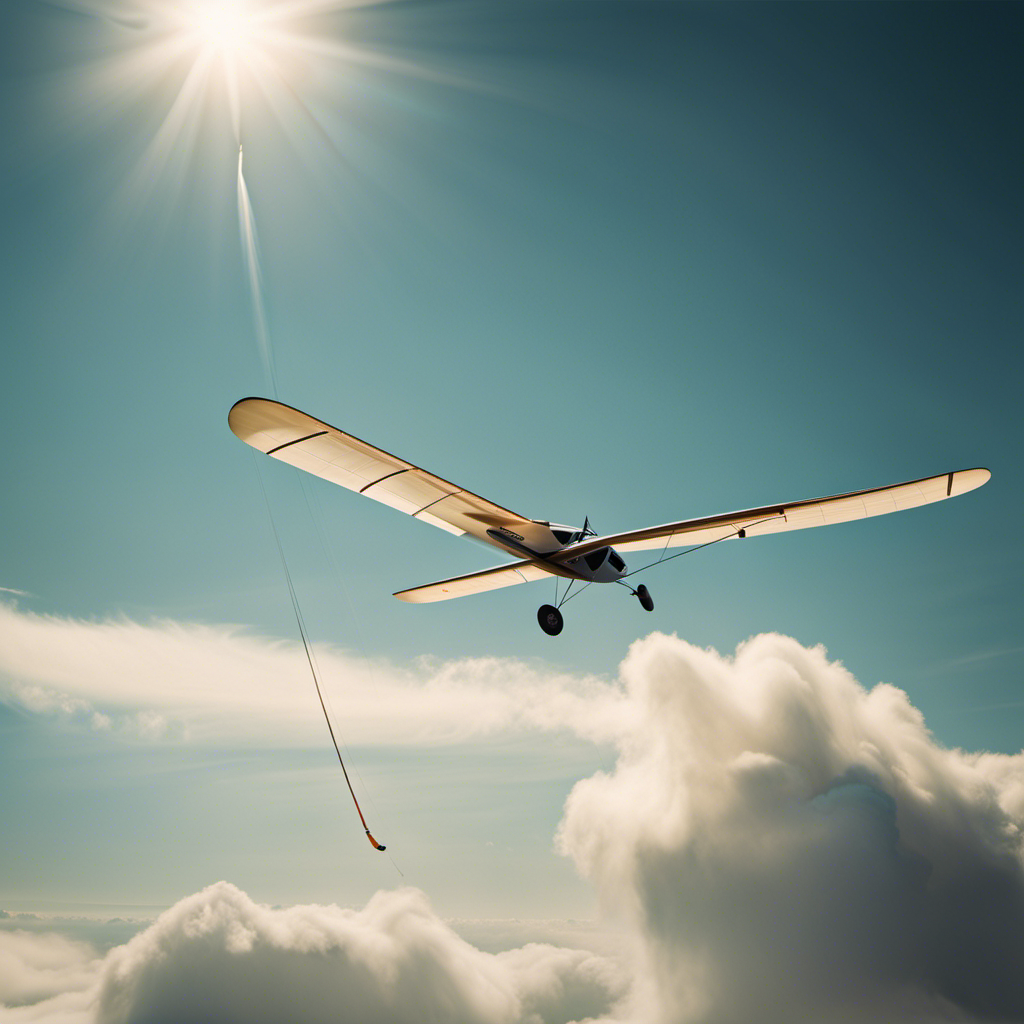The fascination and freedom of flying have always had a unique significance for me. As a private pilot, I have enjoyed many thrilling experiences soaring high above the earth. Yet, recently, I have felt a strong desire to try something new in the world of aviation – gliding.
The thought of gracefully soaring through the air, relying solely on the power of the wind, sends shivers down my spine. In this article, I’ll guide you through the process of adding a glider rating to your private pilot license, so you too can unlock the exhilarating world of gliding.
Get ready to embark on an unforgettable journey!
Key Takeaways
- Keep a comprehensive and accurate logbook of flight hours and details of gliders flown.
- Visit the FAA website to download the necessary forms for updating pilot license with a glider rating.
- Conduct thorough pre-flight inspections and stay updated on weather conditions for safe gliding.
- Participate in glider competitions and public demonstrations to showcase skills and inspire others in the aviation community.
Understand the Requirements for Adding a Glider Rating
To add a glider rating to your private pilot, you’ll need to understand the specific requirements. Having this rating allows you to fly gliders, which are aircrafts that are designed to be flown without an engine. Gliders have unique flight characteristics, such as the ability to soar and stay aloft for extended periods of time using thermal updrafts or ridge lift. Understanding these characteristics is crucial for safe and efficient glider flying.
Adding a glider rating to your private pilot license also comes with a variety of benefits. It expands your flying skills and knowledge, improves your understanding of aerodynamics, and opens up new opportunities for recreational flying.
Now that we have a good understanding of the requirements and benefits, let’s move on to finding a certified flight instructor (CFI) specializing in gliders.
Find a Certified Flight Instructor (CFI) Specializing in Gliders
Look for a CFI who specializes in gliders to help you get your additional certification. Finding the right instructor is crucial to ensure a smooth and successful transition into glider flying. Here are a few key steps to help you in your search:
-
Research glider clubs in your area: Glider clubs often have experienced CFIs who specialize in glider instruction. They can provide valuable guidance and resources.
-
Seek recommendations: Talk to fellow pilots or enthusiasts who have already added a glider rating. They may have insights on reputable CFIs.
-
Look for credentials and experience: Check for CFIs with a glider rating themselves and significant experience in glider flying.
Schedule and Complete Ground Instruction
Once you’ve found the right CFI specializing in gliders, it’s important to schedule and complete your ground instruction to ensure a successful transition into glider flying. This step is crucial in building a solid foundation of knowledge and understanding before you take to the skies. Scheduling conflicts may arise, but it’s important to prioritize your ground instruction sessions to avoid any delays in your training.
The benefits of ground instruction cannot be overstated. It provides you with essential theoretical knowledge about glider flying principles, aerodynamics, weather patterns, navigation, and emergency procedures. By completing your ground instruction, you will be well-prepared and confident when it’s time to take the controls of a glider.
Now that you have a solid understanding of the theoretical aspects, it’s time to complete the required flight training hours.
Complete the Required Flight Training Hours
Make sure you prioritize completing the required flight training hours to gain the necessary experience and skills in glider flying. The required flight training duration for adding a glider rating to your private pilot certificate may vary depending on your current experience level and proficiency.
To help you enjoy the process and make the most of your training, here are some recommended training resources for glider pilots:
- Flight schools or clubs that offer glider training programs
- Online courses and tutorials specifically designed for glider pilots
By investing the necessary time and effort into completing the required flight training hours, you will not only meet the regulatory requirements but also develop the necessary skills and knowledge to safely and confidently fly gliders.
Once you have successfully completed the required flight training hours, you will be ready to move on to the next step of the process: passing the written exam.
Pass the Written Exam
Passing the written exam is a crucial step in obtaining your glider pilot certificate. As an experienced glider pilot, I understand the importance of studying and preparing for this exam.
To achieve a passing score, it is essential to utilize the right study resources. One valuable resource is the Federal Aviation Administration (FAA) Glider Flying Handbook, which covers all the necessary information about glider operations, aerodynamics, and regulations.
Additionally, online practice tests and study guides are available to help you familiarize yourself with the exam format and content. These resources will enable you to confidently answer questions on topics such as airspace, weather, emergency procedures, and glider performance.
Once you have successfully passed the written exam, you can then move on to preparing for the practical test, where you will demonstrate your skills and knowledge in a real-world flying scenario.
Prepare for the Practical Test
To ensure success on the practical test, it’s important to thoroughly review the flight maneuvers and procedures. As an experienced pilot, I know that preparation is key to performing well.
In addition to practicing the required flight maneuvers, it is essential to prepare for the oral exam. This involves studying the relevant aircraft systems, regulations, and navigation procedures. It’s also crucial to be well-versed in emergency procedures, as the examiner may ask you to demonstrate your ability to handle various in-flight emergencies.
By practicing emergency procedures diligently, you will feel confident and prepared to handle any unexpected situations that may arise during the test.
With a strong foundation of knowledge and practical skills, you will be ready to take the practical test with an FAA Designated Pilot Examiner (DPE) and showcase your ability to safely operate a glider.
Take the Practical Test with an FAA Designated Pilot Examiner (DPE)
When you’re ready to take the practical test with an FAA Designated Pilot Examiner (DPE), remember to bring all necessary documents and be prepared for a thorough evaluation of your skills and knowledge. The practical test is the final step towards obtaining your glider rating endorsement, so it’s important to be well-prepared. Here are some practical test tips and considerations for selecting a DPE:
| Practical Test Tips | Selecting a DPE | Necessary Documents |
|---|---|---|
| Review the practical test standards | Research and review DPE qualifications | Pilot certificate |
| Practice with a qualified flight instructor | Ask for recommendations from other pilots | Medical certificate |
| Familiarize yourself with the aircraft’s operating limitations | Check for availability and scheduling | Government-issued ID |
| Prepare for both oral and flight portions of the test | Evaluate their communication and teaching style | Logbook showing required flight hours |
| Stay calm and confident during the test | Consider their location and convenience | Aircraft registration and airworthiness certificate |
Receive Your Glider Rating Endorsement
Once you’ve received your glider rating endorsement, you can start exploring the skies with confidence and skill. The benefits of obtaining a glider rating are numerous.
Firstly, it allows you to fly gliders, which are incredible aircraft that offer a unique and thrilling flying experience.
Secondly, the glider rating enhances your overall flying skills, as it requires you to master essential techniques such as soaring and aerodynamics.
In terms of cost, acquiring a glider rating can be more affordable compared to other types of flying endorsements. The training and examination fees are typically lower, and gliders themselves are often available for rent at reasonable rates.
With your glider rating endorsement in hand, you’ll be ready to take on the next step of updating your pilot license with this exciting qualification.
Update Your Pilot License with the Glider Rating
After successfully obtaining my glider rating endorsement, I was eager to update my pilot license to reflect this new achievement.
The glider rating process involves submitting the necessary paperwork and documentation to the Federal Aviation Administration (FAA). To begin, I visited the FAA’s website and downloaded the appropriate forms for updating my license. These forms required information such as my name, pilot certificate number, and the glider rating endorsement details.
I then filled out the forms accurately and double-checked for any errors or missing information. Once completed, I mailed the forms to the address specified on the FAA website. It is important to allow ample time for processing and receiving the updated license.
With my pilot license updated, I am now ready to enjoy the thrills and challenges of gliding!
Enjoy the Thrills and Challenges of Gliding!
Now that my license is updated, I’m ready to experience the excitement and difficulties of gliding!
Gliding is an incredible aviation sport that combines skill, precision, and adrenaline. Safety is paramount when it comes to gliding.
Before each flight, it’s important to conduct a thorough pre-flight inspection, ensuring that the glider is airworthy and all systems are functioning properly.
During the flight, it’s crucial to constantly monitor weather conditions and maintain situational awareness.
Glider competitions are a great way to test your skills and compete with other pilots. These competitions involve various tasks such as precision landings, distance flights, and speed challenges.
Participating in glider competitions not only allows you to showcase your abilities but also helps in improving your flying skills.
Gliding offers a unique and thrilling experience that every aviator should try!
Frequently Asked Questions
How long does it typically take to add a glider rating to a private pilot license?
Typically, adding a glider rating to a private pilot license takes around 10-15 hours of flight time, depending on the individual’s proficiency. Prerequisites include holding a private pilot license and completing the necessary training and examinations.
Can I use my own aircraft for the flight training hours required for a glider rating?
Using my own aircraft for glider flight training hours offers the freedom of familiarity and convenience. It allows me to master the unique skills required for glider flying, enhancing my overall flying abilities and expanding my career opportunities.
Are there any additional medical requirements for obtaining a glider rating?
There are additional medical considerations and glider pilot physical requirements when obtaining a glider rating. These include passing a medical examination and meeting specific physical standards set by the aviation authorities.
Can I start flight training for a glider rating before completing the ground instruction?
Starting glider training can be done before completing ground instruction. However, it’s essential to understand the glider rating requirements, such as flight time and practical test, to ensure a smooth transition from private pilot to glider pilot.
Is there a minimum age requirement for adding a glider rating to a private pilot license?
The minimum age requirement for adding a glider rating to a private pilot license is typically 16 years old. Training duration varies depending on individual progress, but it usually takes several weeks to complete.
Conclusion
Adding a glider rating to my private pilot license was a thrilling journey filled with challenges and excitement. Understanding the requirements and finding a specialized CFI were crucial steps. Completing the necessary ground instruction and flight training hours was also essential. Passing the written exam and taking the practical test with an FAA DPE proved my competency in gliding. Receiving the glider rating endorsement and updating my pilot license was the final touch.
Now, I embrace the thrills and joys of gliding, soaring through the sky with skill and finesse.
With a heart that soars as high as the skies, Aria, affectionately known as “Skylark,” is the driving force behind Soaring Skyways. Her journey into the gliding world began as a young dreamer gazing up at the soaring birds, yearning to experience the weightlessness and freedom they embodied. With years of experience both in the cockpit and behind the scenes, Aria’s commitment to the gliding community is unwavering.










